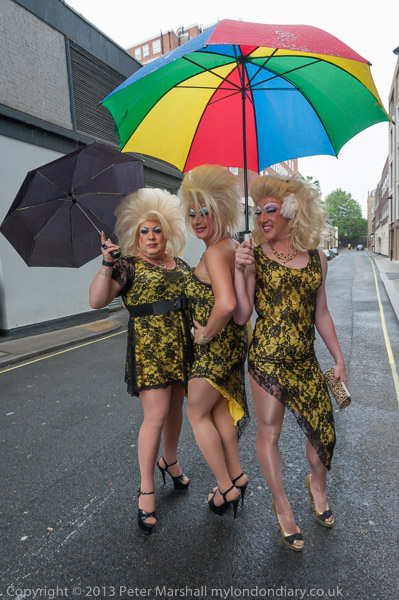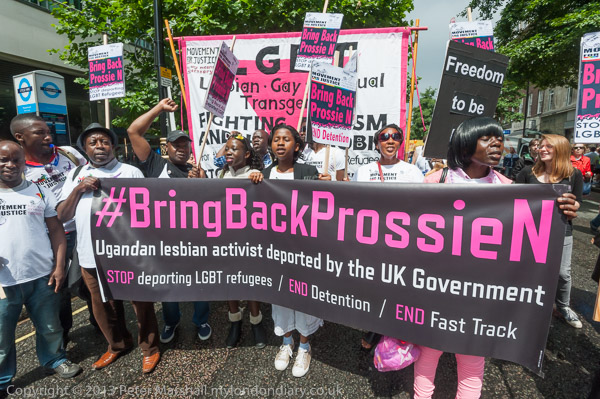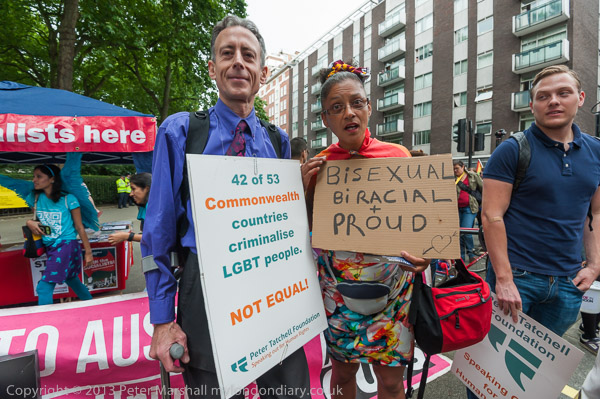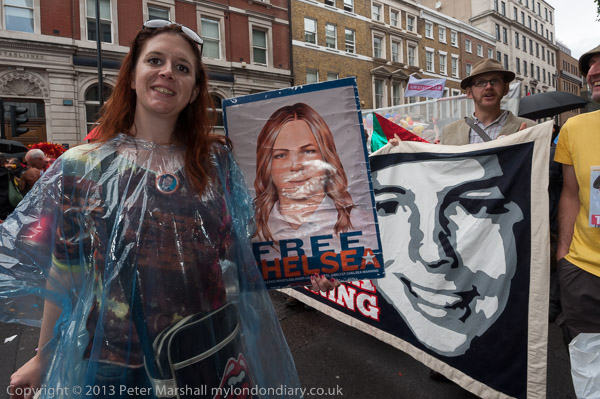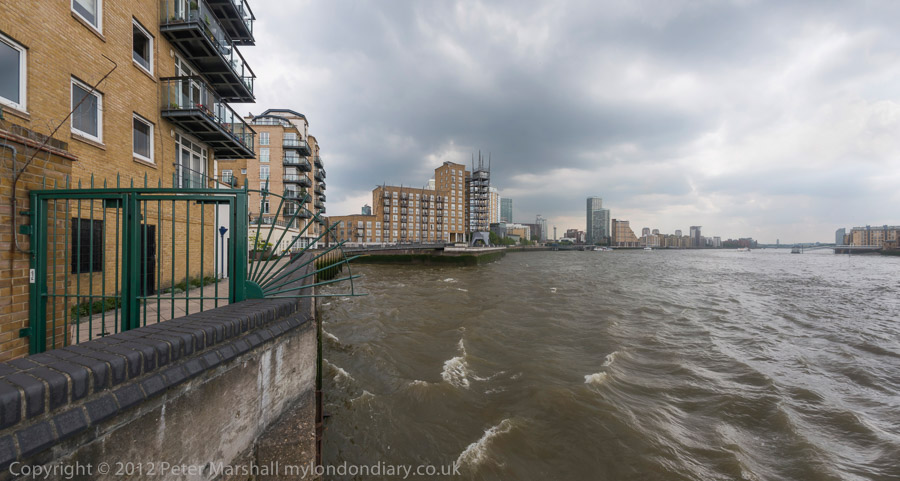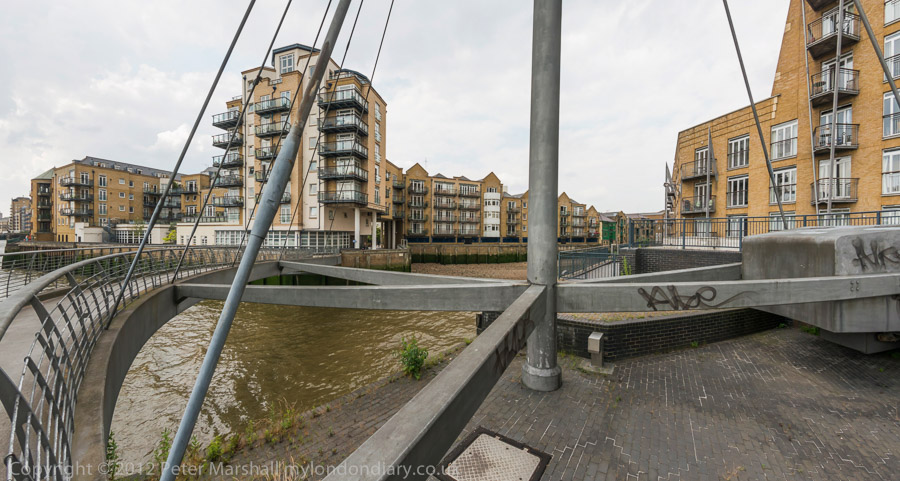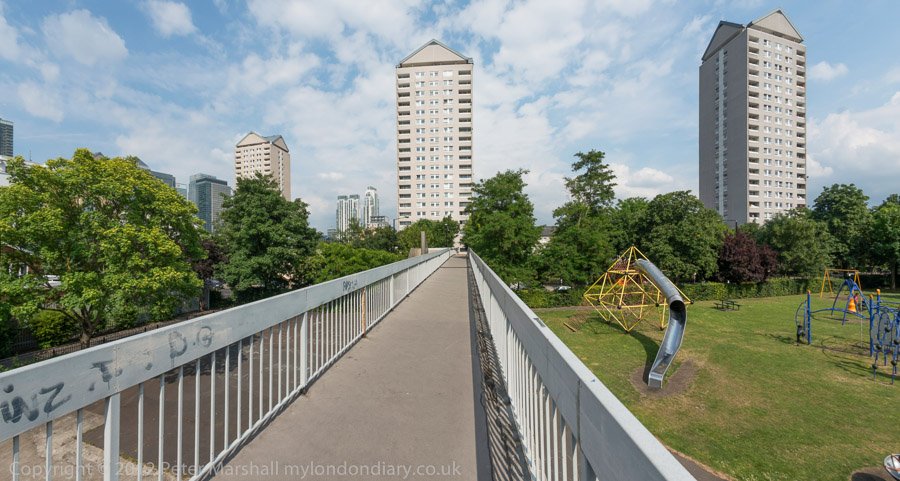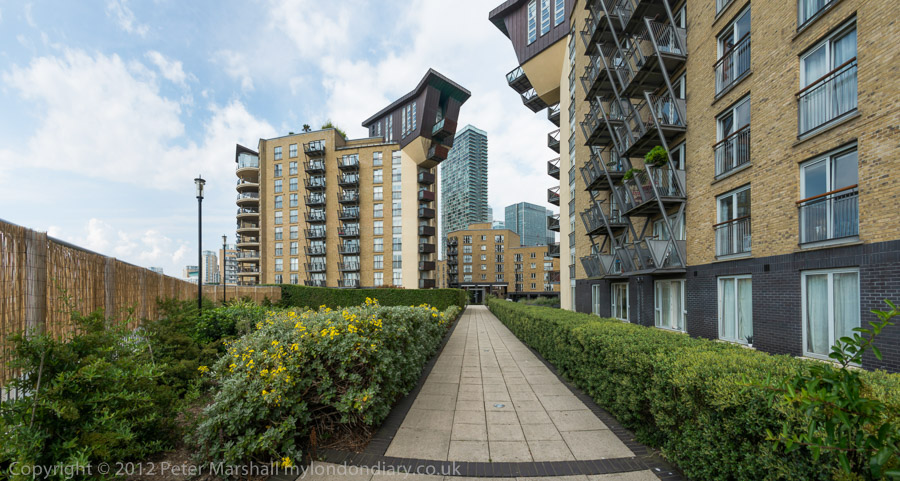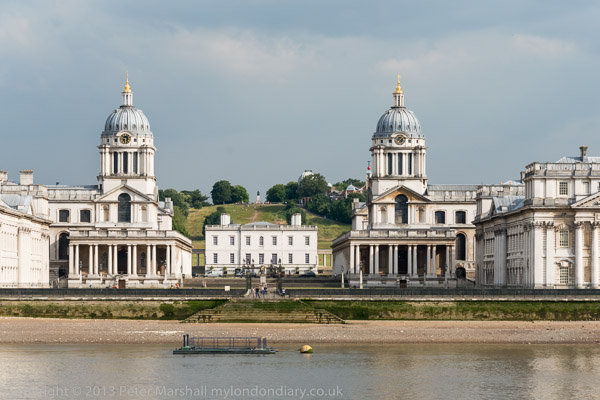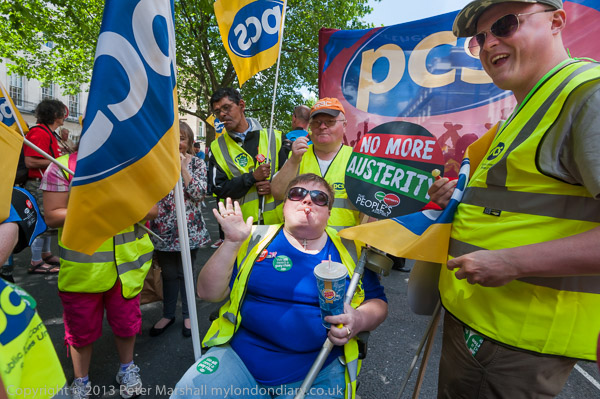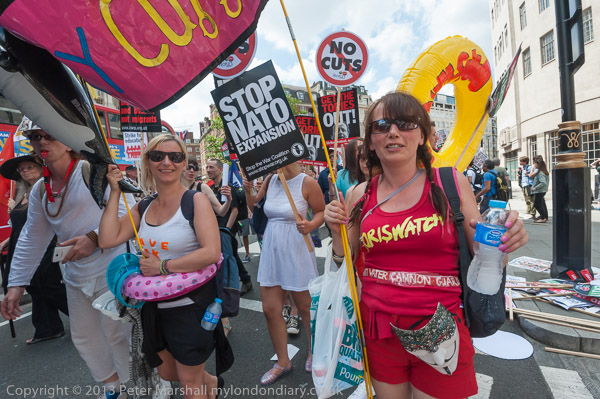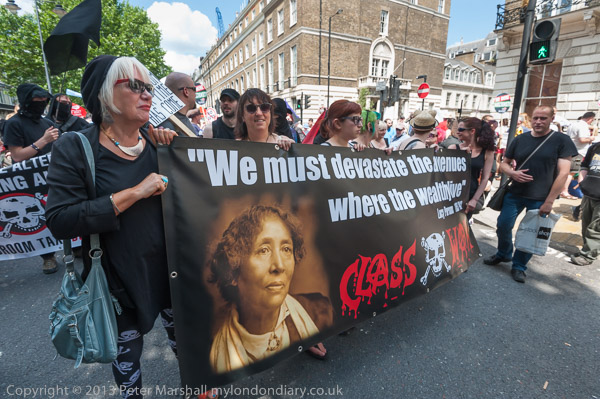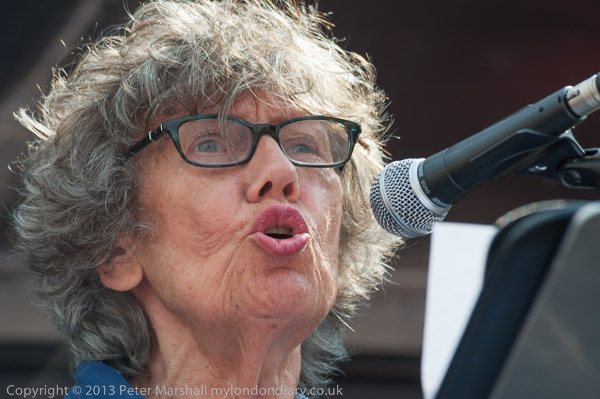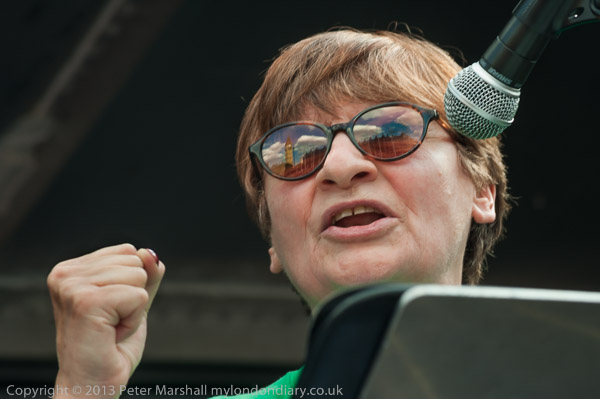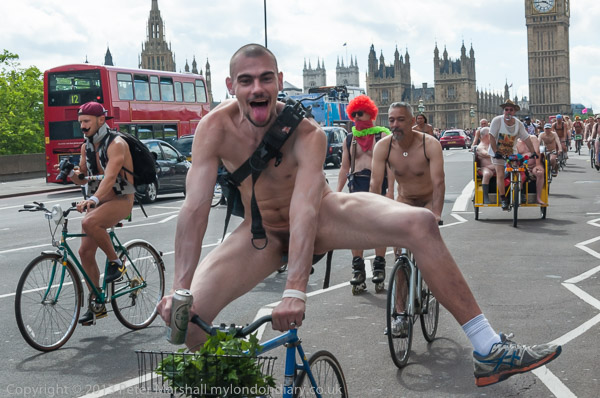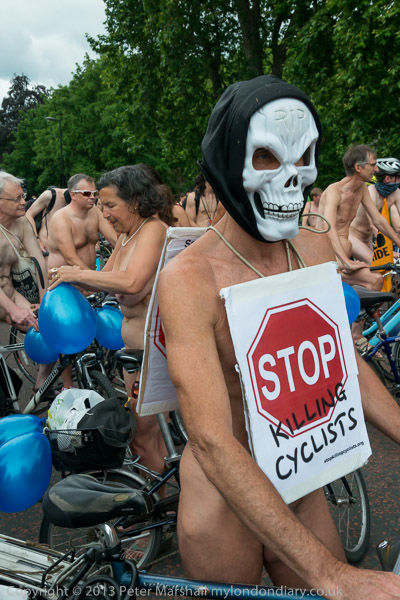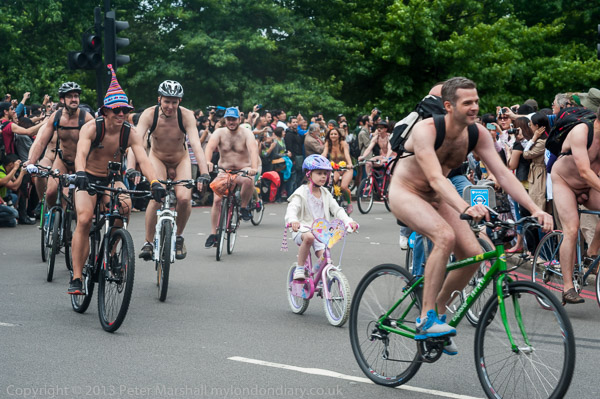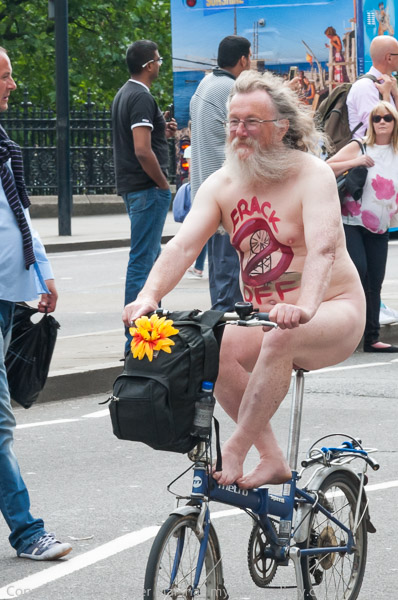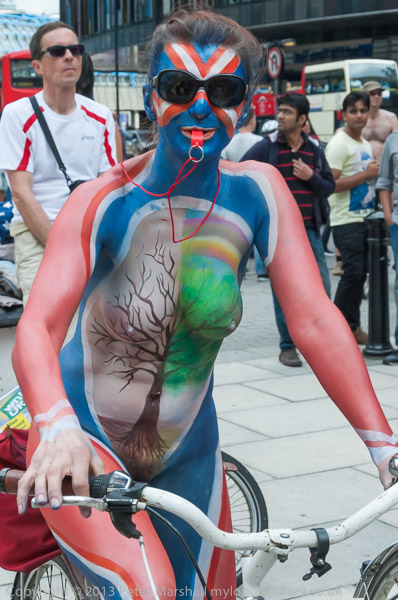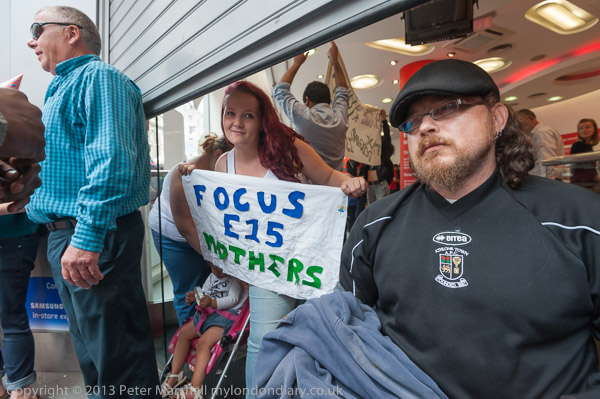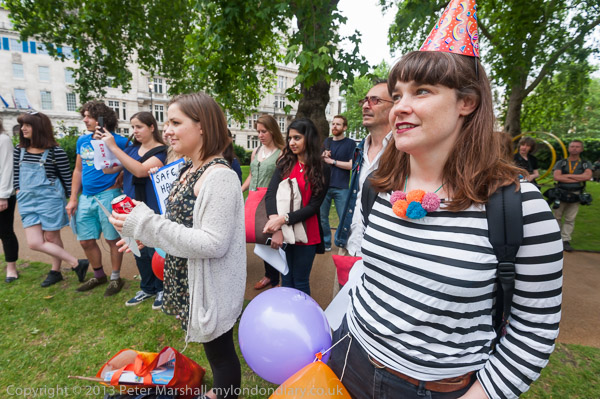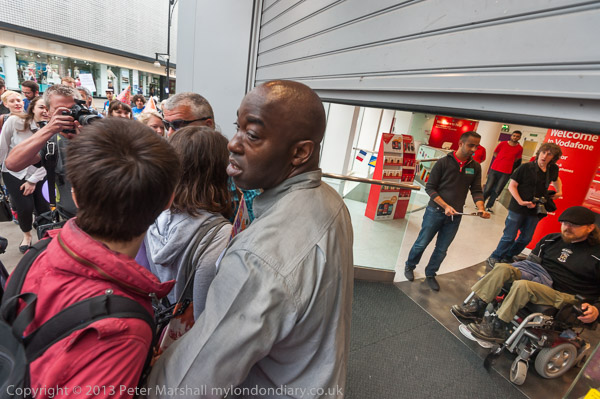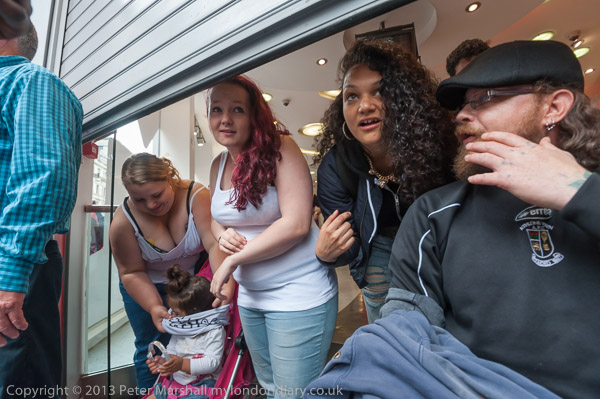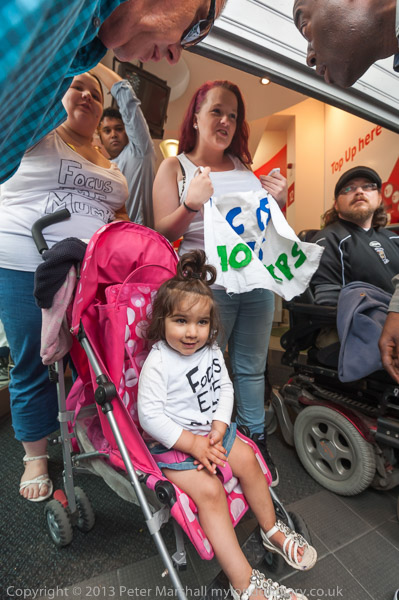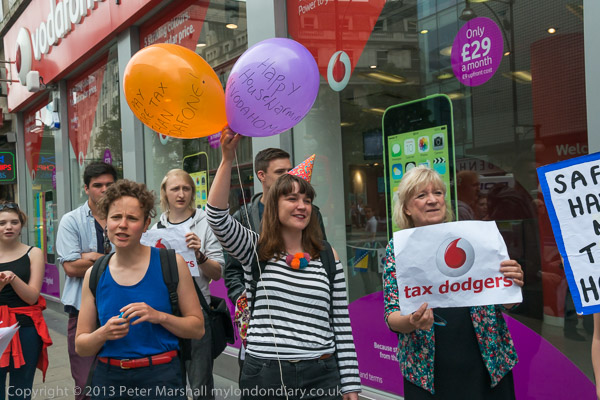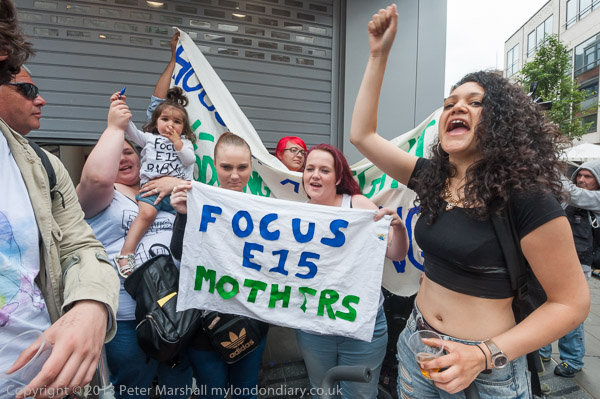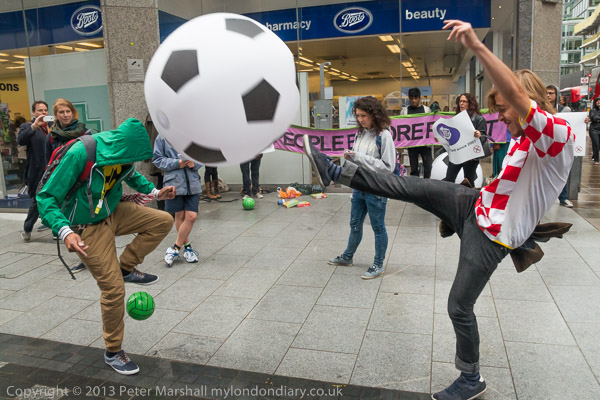
It was a football-themed protest outside Boots by UK Uncut, but although Boots (or ‘Loots‘ as some of the posters called them in a nice version of their logo) have been dodging tax, I knew that the protest there was only a diversion. UK Uncut were there to occupy the police while DPAC and Occupy London were getting busy with another protest somewhere not very far away.
Obviously the protesters wanted to keep what they were doing a secret from the police, and surprisingly seemed to have managed to do so, but I felt just a little left out of things in that they hadn’t trusted me more. Of course I wouldn’t pass it on to the police, and I think most of the protesters know me well enough to know that.
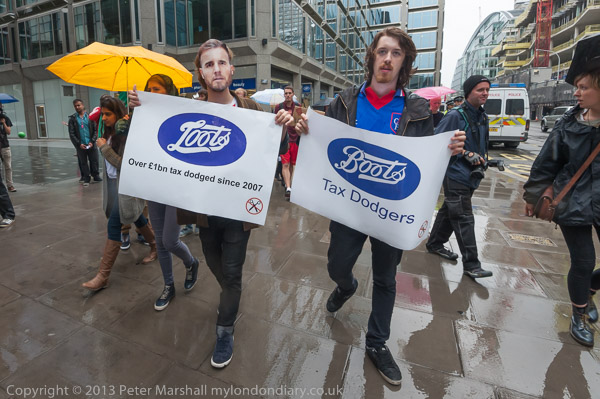
I could have gone to one of the planning meetings for the event – which I had known about – but there is a line between being a part of a protest and reporting on it that I think it is important to stay clearly on one side of. Not that protesters can’t photograph protests, but you can’t be a part of the protest and report objectively on it; a little distance is vital. But it would have been nice to know what was happening and when – as I have done at some previous protests by DPAC – so as to be at the right place at the right time.
As it was, by the time the protesters from Boots had marched down to Westminster Abbey to join the others already there we were just a vital minute or two late. So I wasn’t able to photograph the initial stage of the protest, and I would have liked to have done so.
I had to make a choice quickly whether to go over the fence and join the protesters or stay with the others who were outside the fence. It wasn’t hugely high, and there were certainly places I could have managed to go over even despite my age and condition (I have a real problem now with balance if I take my feet off the ground.) But I wasn’t sure if I wanted to, and certainly was not convinced if I had done so that I would have been able to leave when I wanted, even by showing my press card. The police are not always helpful to the press.
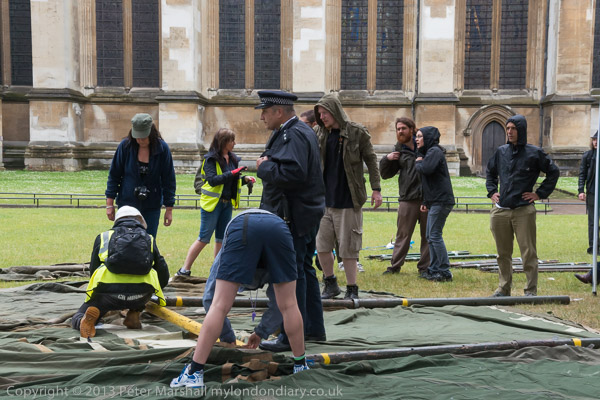
There were a few things I might have been able to do better inside. Although my picture shows quite clearly the officer standing on the tent so that it could not be erected, a closer viewpoint with a wide-angle might have been better, and would have shown more of the abbey behind.
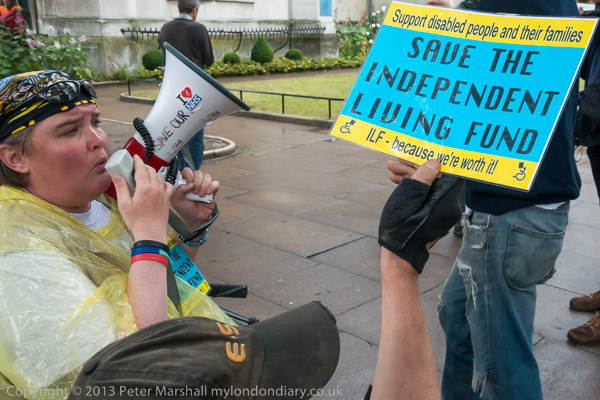
And while I was able to take some decent pictures of Paul Peters of DPAC speaking by leaning as far as possible over the fence, being able to move a few feet further might have been better. But at least I was able to get pictures, if rather more with the 70-300mm than I would have liked.
Using that lens should have had one big advantage. It was dull and raining slightly, and the long lens hood on that zoom is a great rain shield. Unfortunately I’d lost the lens hood a few days previously, and although the replacement I’d ordered arrived that day, it only came after I’d left home. So I was taking pictures using my left hand to shield the front of the lens.
It was raining enough for most of the pictures taken with the 16-35mm to have a least one area with some diffusion caused by rain on the filter, including a whole series where I got a little excited and didn’t wipe the lens until I’d taken quite a few frames.
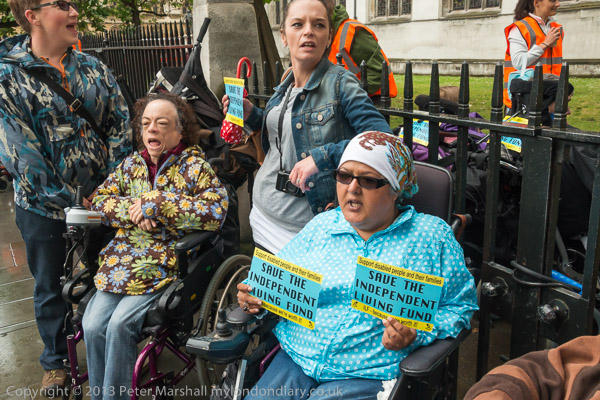
I’d I had been inside I would not have been able to photograph the protesters who had been left outside, and would also have missed the pictures of the arrest, where the protester was pushed against the fence by two officers, nor to run around to photograph as the protester was put into the police van.
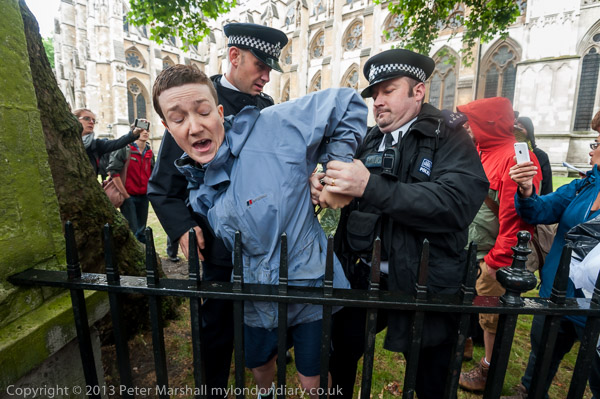
As more and more police arrived, it did become harder to take photographs as most of them formed a line around the area inside the fence a couple of yards away from it. Fortunately there were a few feet between each of them, and by moving around I was able to see through the gaps. At times there was quite a crush of onlookers and other photographers at the fence which made this difficult, but I was quite pleased with what I was able to do.
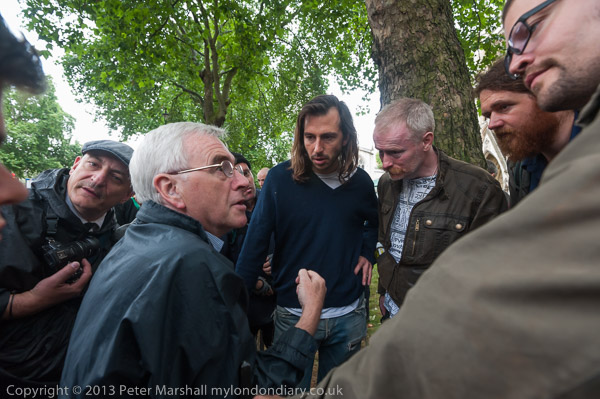
Among others outside the fence was MP John McDonnell, who spent a lot of time trying to contact the Dean of Westminster and get him to allow the protesters to set up a temporary camp in the area to protest against the ending of the Independent Living Fund. Unfortunately although the Church of England has made some principled statements against the loss of the ILF, the Dean wasn’t prepared to talk to the MP or the protesters, but simply wanted the police to get these people off his grass.
Being outside did have the advantage that when I got tired I could simply walk away and catch the train home. But by then I’d decided there was unlikely to be much of interest happening.
You can see the pictures I did get both of the earlier protest, UK Uncut ‘Boot Out Boots’, and also the protest proper, Occupy Westminster Abbey – save the ILF
, and find out more about the protests there.

